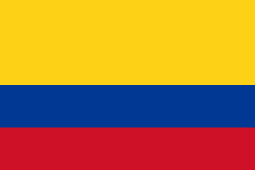One Tree Planted: Dedicated to Global Reforestation
Posted by House of Marley on Sep 23rd 2022
Forests cover roughly 30 percent of the Earth’s surface—but we’re losing a football field's worth of trees every second. With deforestation removing 80,000 acres every day, it’ll only take a couple centuries before trees are gone for good unless we do something.
That’s where One Tree Planed comes in. One Tree Planted is a nonprofit organization focused on global reforestation. Since 2014, they’ve planted over 40 million trees in over 47 countries and they make it easy for anyone to plant trees in deforested areas of the world.
So far, House of Marley has planted 340,400 trees with One Tree Planted through Project Marley, with another 37,600 trees to be planted by the end of 2022. Keep reading to learn more about One Tree Planted and why trees matter.
One Dollar. One Tree Planted.
If you’ve ever tried to buy a small tree or sapling at a nursery, you might think that planting trees is an expensive endeavor. After all, a young tree or sapling can cost $50-100 before factoring in the cost of having them properly planted.
Thankfully, that’s not the case for One Tree Planted. You can plant trees with One Tree Planted by donating as little as a dollar. One Tree Planted uses the funds from donations to plant tree seeds and seedlings in a region of your choice—North America, Latin America, Asia, Africa, Europe, or the Pacific.
One Tree Planted works with reforestation partners who plant the seedlings during the rainy season. Their team will keep you updated with information about the tree species, expected survival rate, community engagement and ecological benefits.
Your contribution will help restore habitats, improve water and soil quality, support local communities and more. Watch this video to see how One Tree Planted leads reforestation projects.
Why Do We Need Trees?
You probably remember from school that trees are vital resources that sustain all life on Earth. If you’re a little fuzzy on the specifics, here’s an overview of the environmental, health and social benefits of planting trees.
Cleans the Air and Creates Oxygen
Trees absorb carbon dioxide and release oxygen. This process provides nutrients for the tree in exchange for clean air that we can breathe. According to Forestry Specialist Ross Bernet, a mature tree can absorb and clean 22 pounds of carbon dioxide per year.
Oxygen levels on Earth are steadily decreasing and deforestation is one of the main causes. Scientists predict that the current decline in oxygen levels will only sustain human life for another 3,600 years unless we change the way we treat the Earth. Reforestation is a big step towards a healthier world.
Trees also reduce the greenhouse gas effect—a phenomenon that causes gases to trap heat in the atmosphere. NASA Earth Observatory claims that cities produce 70 percent of carbon dioxide emissions—2,600 megatons per year. Planting trees in urban areas can offset the large carbon footprint caused by transportation, electricity production and burning fossil fuels, thus reversing climate change.
Reduces Water Pollution
Trees reduce water pollution by capturing rainwater through their roots and releasing water vapor back into the air via their leaves. This keeps water from pooling and reduces the amount of polluted runoff that flows towards nearby lakes, rivers and oceans. According to the USDA Forest Service, 100 trees can absorb up to 139,000 gallons of rainwater every year.
During the rainy season, trees can prevent floods and landslides by catching water with their canopies. Floods and landslides are caused when the soil becomes oversaturated with too much water. Tree roots also help break up dense soil, allowing more rainwater to soak into the ground.
Improves Soil
Healthy soil is good for agriculture and environmental sustainability. In addition to giving plants a source of nutrients, soil contains billions of microbes that are vital to biodiversity. Fertile soil also slows climate change by storing carbon and reducing emissions.
Trees improve soil fertility by transferring nitrogen between the surface and the deepest layers of soil. This process gives life to dead soil while giving crops the nutrients they need to grow healthy and strong.
Promotes Biodiversity
Trees provide a habitat for animals, plants, fungi and even the smallest microorganisms. When trees are more abundant, ecosystems are able to house a wider variety of species.
But deforestation ruins biodiversity and puts countless species at risk. Trees provide food and shelter that animals need for survival. Without trees, it becomes harder for organisms to get the resources they need, including giant pandas, mountain gorillas, pygmy sloths and Asian elephants.
Reduces Stress and Anxiety
Trees aren’t only beneficial for the environment—they’re good for our health too. Whether you’re walking through the park or hiking a trail, being around trees can give you a mood boost.
In 2020, forestry experts reviewed 201 different studies that examined the link between trees and human health. Their findings show that exposure to trees has many health benefits, including stress relief. The evidence also shows that planting trees in urban areas is a good way to create a healthier community.
Wellness specialists in China and Japan recognize the health benefits too. They use “forest therapy” to ease mental health issues like anxiety. Forest therapy is a guided practice that invites people to focus on nature. Studies show that forest therapy can reduce cortisol levels—the chemical that causes stress.
Creates Jobs
Forests provide jobs for 1.6 billion people around the world. Trees provide the natural resources that we need for everyday products. Though traditional logging is destructive to the environment, sustainable forestry practices allow us to harvest trees without harming ecosystems.
Sustainable foresters follow strict standards to manage forests. By focusing on reforestation, biodiversity and water conservation, they're able to collect lumber without over-harvesting trees or harming wildlife.
Sustainable forestry also includes occupations that protect trees from natural disasters. Forest firefighters and prevention specialists tame wildfires and find ways to reduce hazards. These teams patrol forests and report fire hazards that pose a risk.
Get Involved
One Tree Planted is making the world a better place, one tree at a time. Trees are vital to the air, water, land and all life on Earth. Visit One Tree Planted.org to start planting trees today!













